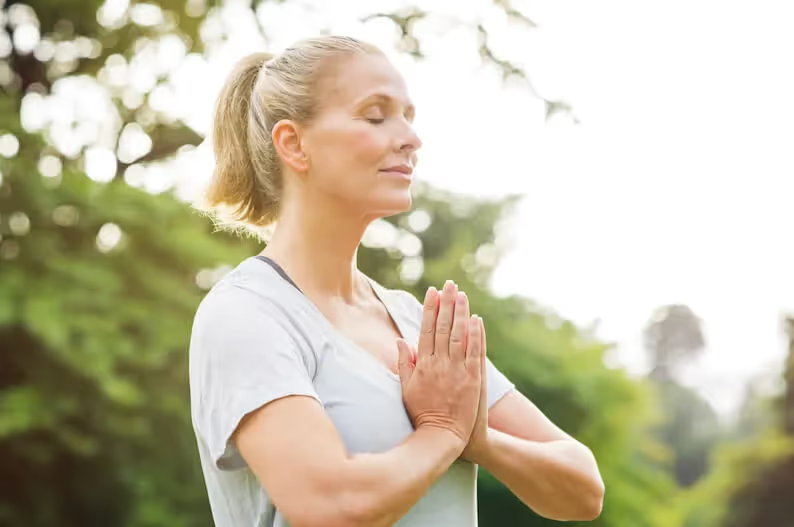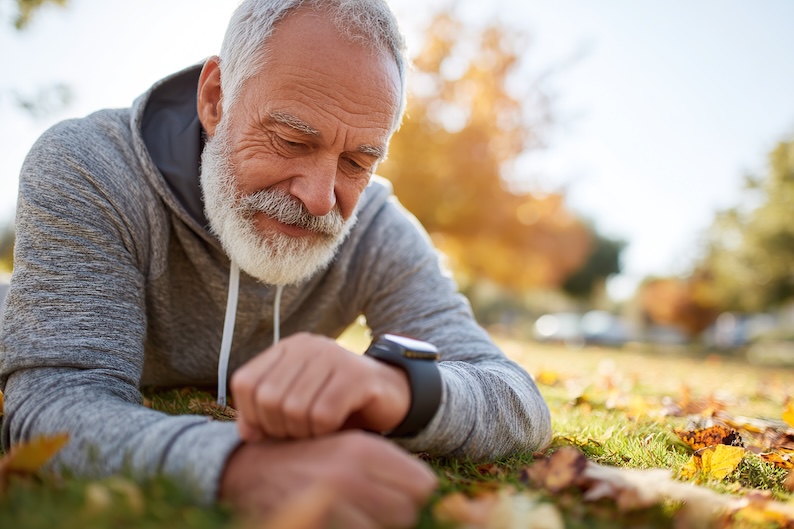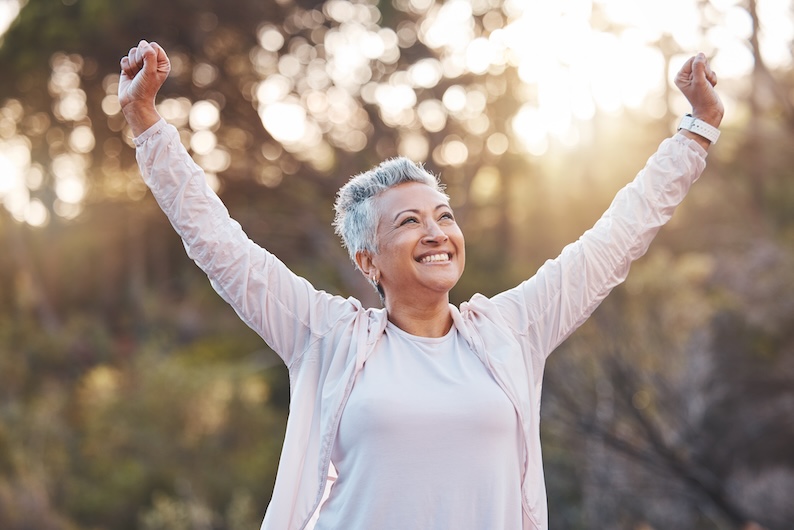Far more than a mere relaxation technique, meditation is an ancient art that transcends cultural boundaries and spans millennia. But beyond its ancient roots and spiritual associations, meditation stands as a contemporary antidote to the challenges of our fast-paced world, providing a pathway to not only inner peace but also to the preservation and enhancement of our physical and mental well-being. With the holiday season in full swing, now is the perfect time to engage in the practice of meditation. We asked our meditation expert, VIPcare provider Dr. Hoa Le, for some insight into the ancient practice and to learn how meditation can be practiced for healthy aging and Better Health.
How does meditation contribute to healthy aging?
Meditation, in a general sense, can be understood as a transformative process that occurs in a practitioner's mind, leading to a state of "non-attachment" where one can simultaneously observe the uniqueness of oneself as well as the shared experiences between one and other sentient beings. Healthy aging, from my perspective as a medical doctor with 20 years of experience in taking care of patients, includes practices and thoughts that promote independence, autonomy, purpose, and acceptance. Without intentional changes, the aging process can be chaotic, fear-inducing, and full of uncertainty. Meditation can bring certain calmness and insights so aging can be "healthy." More often than not, stress is a part of life and can be amplified as we get older, whether it is due to declining physical health, loss of valued relationships, or fewer financial resources. Meditation can help its practitioners reduce stress by lowering stress hormones such as cortisol. It can also preserve and, to a certain extent, enhance cognitive function. It can improve memory, attention, and concentration, contributing to the brain's neuroplasticity. Meditation can help us build up our emotional strength and lead to a state of "contentment," which can be described as a state of satisfaction with feelings of gratitude and acceptance of one's conditions, leading to inner peace and emotional stability. Meditation can help improve our sleep. As we age, our sleep pattern tends to get fragmented with less restful stages. Specific meditative techniques such as mindfulness can promote relaxation and reduce insomnia, leading to restful nights and alert days. Chronic ache is a common malady of the elders and can reduce one's quality of life. Pain can be reduced by promoting relaxation and changing one's perception of pain intensity. This can be achieved via mindfulness-based pain management programs. Other techniques of medication can emphasize loving-kindness and compassion. These techniques of meditation can enhance feelings of empathy and connection with others. This is especially useful for older adults who experience social isolation. Mindfulness meditation helps practitioners to be aware or "mindful" of the present moment and their inner thoughts. This self-awareness can lead to a healthier lifestyle by improving dietary habits and reducing alcohol and tobacco use as well. Meditation, with its varying techniques, can make aging healthier by empowering its practitioner to improve their well-being and to accept things as they are.
Can meditation help improve cognitive functions and memory as we age?
Cognitive functions are mental processes that help us process information from the external environment and make sense of it. Memory is a highly complex mental process where one encodes information, stores and later retrieves it on demand. As we get older, our cognitive function and memory undergo changes. Patients tend to notice that they think slower, their memories are not there for them to do quick recall or to perform complex calculations. It does affect one's quality of life. We would need help with paying bills, understanding new rules and policies, and driving to places. One technique of medication can involve focusing the mind. In practice, practitioners are advised to "get rid of distracting thoughts." They are also advised to "observe their thoughts and not to pursue them." This mental practice helps one focus the mind, which can enhance attention and concentration, essential to cognition and memory. Meditation can also promote neuroplasticity, leading to cognitive flexibility and the ability to adapt to new information. The hippocampus plays a critical role in memory processing. In meditation practitioners, we can see changes in the hippocampus consistent with the growth and formation of new connections. Meditation can improve one's cognition and memory as we age.
Are there specific meditation techniques that are more beneficial for promoting healthy aging?
In a general sense, meditation is a transformative process of the mind that can lead to inner peace and a feeling of tranquility. To get there, one can employ various techniques. Here are two common techniques that I find especially useful to promote healthy aging.
- Mindfulness Meditation. Practitioners are asked to pay attention to the "present moment" in a non-judgmental manner. This practice makes practitioners aware of their inner thoughts and emotions and helps them gain control of their mental processes and let go of "negative" or distracting thoughts.
- Loving-Kindness Meditation. Practitioners are encouraged to "cultivate feelings of compassion and goodwill" towards oneself and others. These strong emotions are strengthened and become the dominant emotional state. This is especially useful to help practitioners manage feelings of loneliness and anxiety, which can be common as we age.
Can meditation help in managing chronic pain conditions that often accompany aging?
Chronic pain and aches is a common condition that elders experience. It has both a physical and a mental component in the sense that the perception of pain is as important as pain itself. Meditation can help us manage chronic pain in a healthier way. For example, mindfulness practitioners can make themselves aware of the pain and can thus increase their pain tolerance and reduce their pain perception. Meditation can help reduce anxiety, which is commonly associated with chronic pain, by promoting muscle relaxation and lowering stress hormones. Practitioners of Loving-Kindness can focus their emotions of loving and being kind towards oneself and others. This cultivation of positive emotions can lessen one's emotions of pain, anxiety, and stress. Patients with pain do not sleep well, and meditation can enhance sleep patterns and improve sleep quality by calming the mind and relaxing the body. Patients would have more refreshed sleep and can manage their pain better.
What are some practical tips for older adults new to meditation who want to incorporate it into their daily routine?
For new beginners of meditation, I first remind them of the purpose of meditation. It is not a magic "cure-all" practice. It is not something abstract but rather a form of "exercise." I would like to compare it to physical exercise, so meditation is a form of mental exercise. Just as physical exercise has different techniques and depending on the purpose, we select the best techniques. Two techniques of meditation that I would like new practitioners to consider are the Mindfulness and Loving-Kindness techniques. I would like new beginners to try both techniques and see which one gives them the benefits that they are looking for. I do not ask new practitioners to adopt the formal crossed-leg position of experienced practitioners. Sit in a way that is stable and comfortable is all I ask. Feel free to use a cushion, a chair, or, in some cases, lie down. I find it especially useful to have a set time per week. I recommend three times a week and a half hour each and pick a time that is quiet, usually early in the morning or late at night. I also want practitioners to take meditation seriously in the sense that they do not let themselves be distracted by phone calls, TV, or texts. If possible, I would like practitioners to designate a set of clothes that are comfortable to be used as "meditation clothes''. Just like we have clothes for physical exercise, we have clothes for "mental exercise." It helps our mind and body focus on the practice at hand. Meditation is a wonderful journey. Everyone has a beginning. How far one can go depends on the practitioner. I recommend a fixed schedule, the right mindset, and a set of comfortable clothes, and a quiet time. Let's meditate!
Can meditation have a positive impact on maintaining social connections and preventing feelings of isolation in older adults, promoting healthy aging?
Meditation can help practitioners achieve inner peace and calm. By spending time cultivating Loving-Kindness and being mindful of their inner thoughts and emotions, practitioners can develop self-acceptance and self-compassion. Practitioners are encouraged to apply a "non-judgmental attitude" toward oneself and others. This can help reduce feelings of inadequacy and loneliness. Strong emotions such as anger and resentment can be effectively self-managed with meditation. I always encourage elders to maintain social connections as they get older. Humans are social animals. Our happiness depends to a certain extent on social connections. Practitioners of meditation are asked to be non-judgmental and "let go of the past." This attitude would help them maintain social connections and friendships regardless of the presence of prior negative interactions. The increased empathy would help older adults better understand and relate to others, both young and older. Meditation would also compel practitioners to make new friendships. True practitioners of meditation see their consciousness as a part of a larger consciousness of the universe and their life as a part of the great circle of life of all sentient beings.
About Dr. Hoa Le
Dr. Hoa Le is a primary care physician specializing in family medicine. He has over 20 years of experience and is the primary care provider at VIPcare Pinellas Park. Dr. Le cherishes and appreciates the diversity of his patients.




